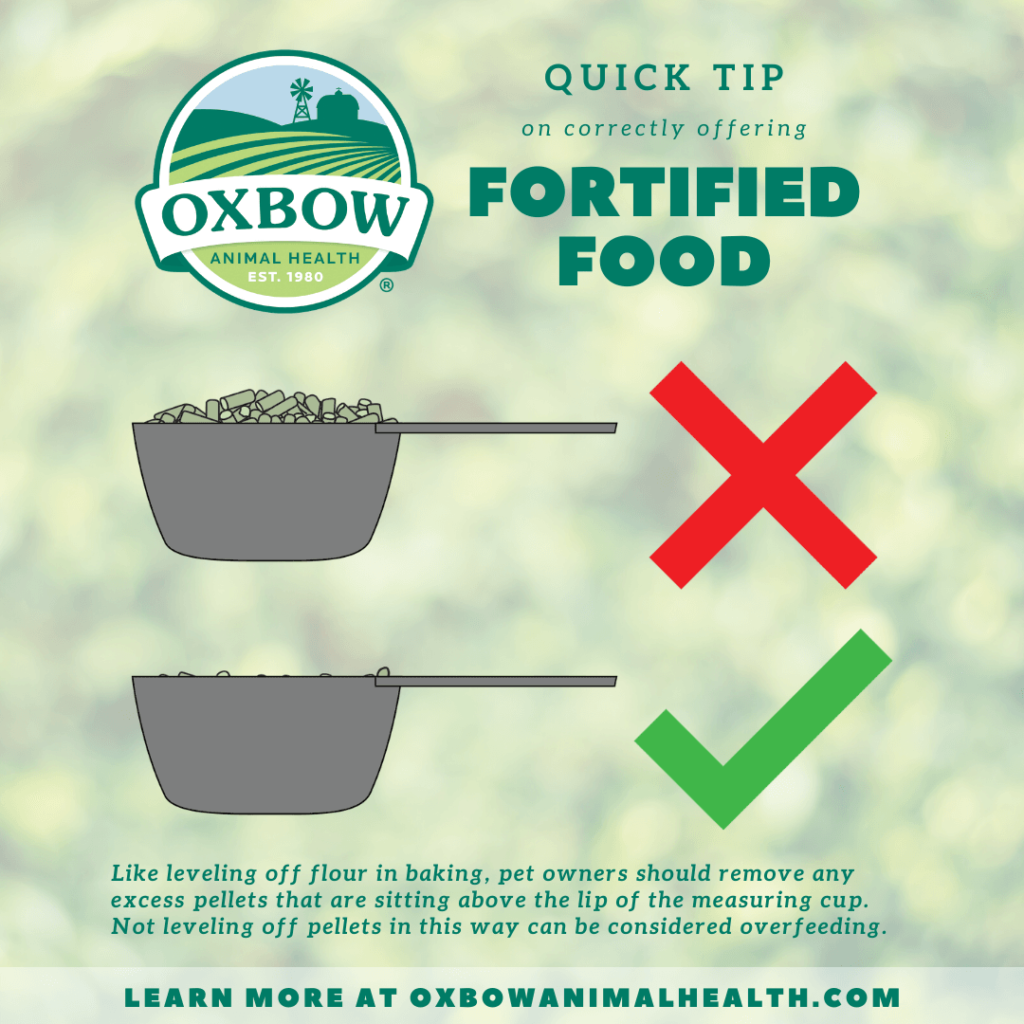Even seasoned pet parents can make simple mistakes when it comes to feeding fortified food to their pets. Here are some quick tips to keep your pet happy and healthy:
- Confirm that you are not majorly over or underfeeding your pet. Occasionally review the feeding directions on the back of the food’s packaging. While it is rare for feeding directions to change without notice, it can never hurt to be vigilant! Many pet parents also choose to purchase a measuring cup that is dedicated specifically to measuring their pets’ food to decrease the chance of measuring incorrectly.
- Are you feeding enough per pet? Make sure you are offering an appropriate amount of pellets per animal. If you have two guinea pigs, for example, you will need to provide 1/8 cup of pelleted food per animal daily. If they are housed together and eat from the same dish, this equates to providing ¼ cup total every day. If you are concerned about one individual being possessive over the food bowl, serve the pelleted food evenly into separate dishes (in our example, this would be 1/8 cup of food in one dish and the other 1/8 cup in a second dish for two guinea pigs).
- Properly level the measuring cup before serving. Like leveling off flour in baking, you should remove any excess pellets that are sitting above the lip of your measuring cup. Not leveling off pellets in this way can be considered overfeeding. Small amounts of too much food can add up! Overfeeding in small amounts for an extended period of time can affect your pet’s appetite in the long-term, and can affect your ability to prevent obesity-related health issues in your pet. Check out our blog post if you have concerns over whether your pet is over or under their ideal weight.
- If your pet has suddenly stopped eating fortified food, don’t wait too long to investigate the reason for their refusal, as it could be anything from flavor preference changes to a serious medical condition. Visit our blog post about food refusal in guinea pigs for ideas to help troubleshoot the reason for your pet’s refusal, as well as ways to get them interested in their uniform fortified food again (much of the information in this blog post can be applied to rabbits, too!). If you have changed your pet’s fortified food recently, be sure to read our blog post on how to transition your pet’s fortified food.

Learn More
The Importance of Young Formulas for Small Animals
